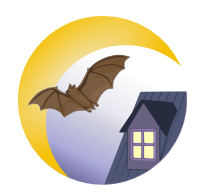Pallid bat

Credit: Tony Palmer
Latin name: Antrozous pallidus
Average size: Total length of 9-14 cm
Wingspan: 31-37 cm
Weight: 12-24 g
External characteristics: The pallid bat is one of Canada’s largest bats, the hoary bat being the only species that exceeds its size. The pallid bat is pale, as its name suggests, with short and fine fur. The dorsal fur is pale yellow with a tinge of brown, while the fur on its underside is creamy white. Its face has small wart-like pararhinal glands that produce a skunk-like odour, which is thought to be used as defense mechanism. The ears are large and extend well beyond the nose when pushed forward. The tragus is long, pointed, and half as long as the ear. Equipped with strong teeth, this species is well adapted for killing and eating large invertebrates. Females of this species are often heavier than males.
Habitat: The pallid bat ranges from Mexico and passes through the western United States to Canada where it is confined to the southern Okanagan Valley of British Columbia. It usually frequents arid or semi-arid habitats. In British Columbia, this species is found in low altitude grassland areas and Ponderosa Pine forests in the vicinity of cliff faces. The pallid bat is generally gregarious but little is known about its habits in British Colombia except that they seem to prefer roosting in Ponderosa Pines during the night.
Reproduction: Mating occurs in the fall or winter. Females retain sperm in their uteri throughout the winter until spring when fertilization occurs. The gestation period lasts approximately 67 days. The pallid bat usually bears one or two offspring, with twins most common. Females are capable of breeding in their first year, but generally only bear only one pup. The young weigh approximately 3 grams at birth and are not completely developed. They are also born with their eyes closed.
Federal status: Threatened
Seen in: British-Columbia

